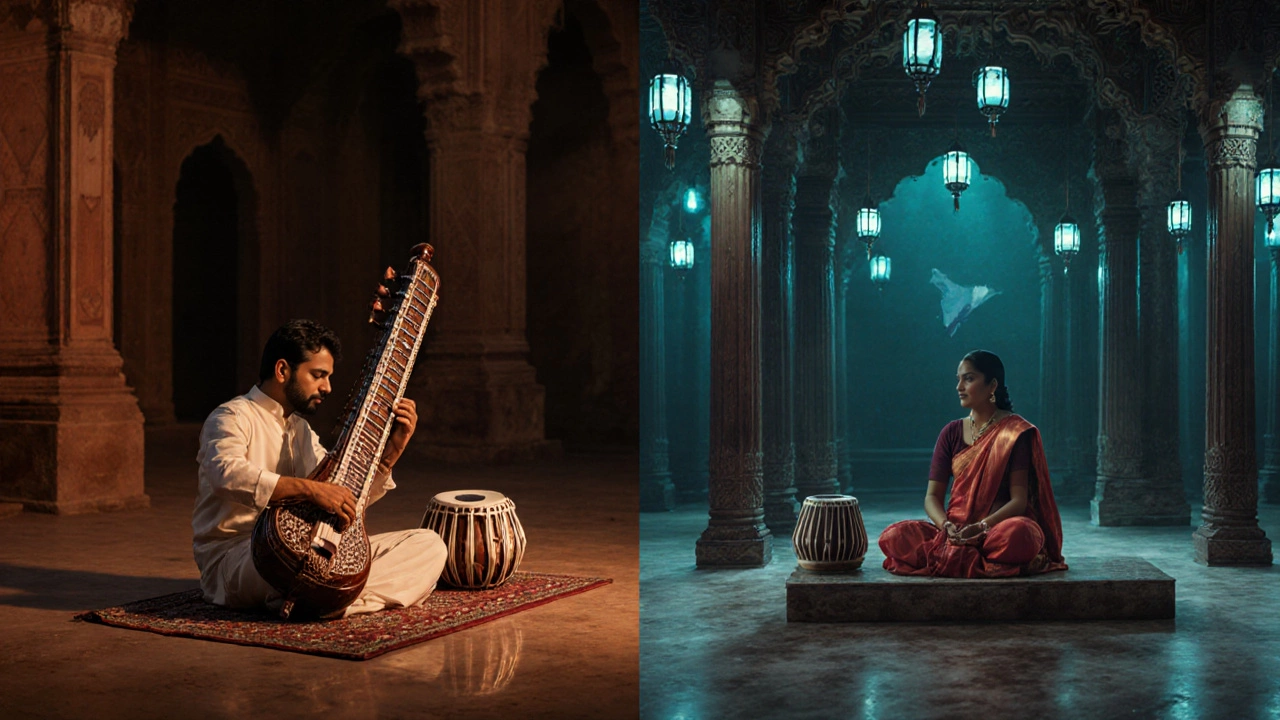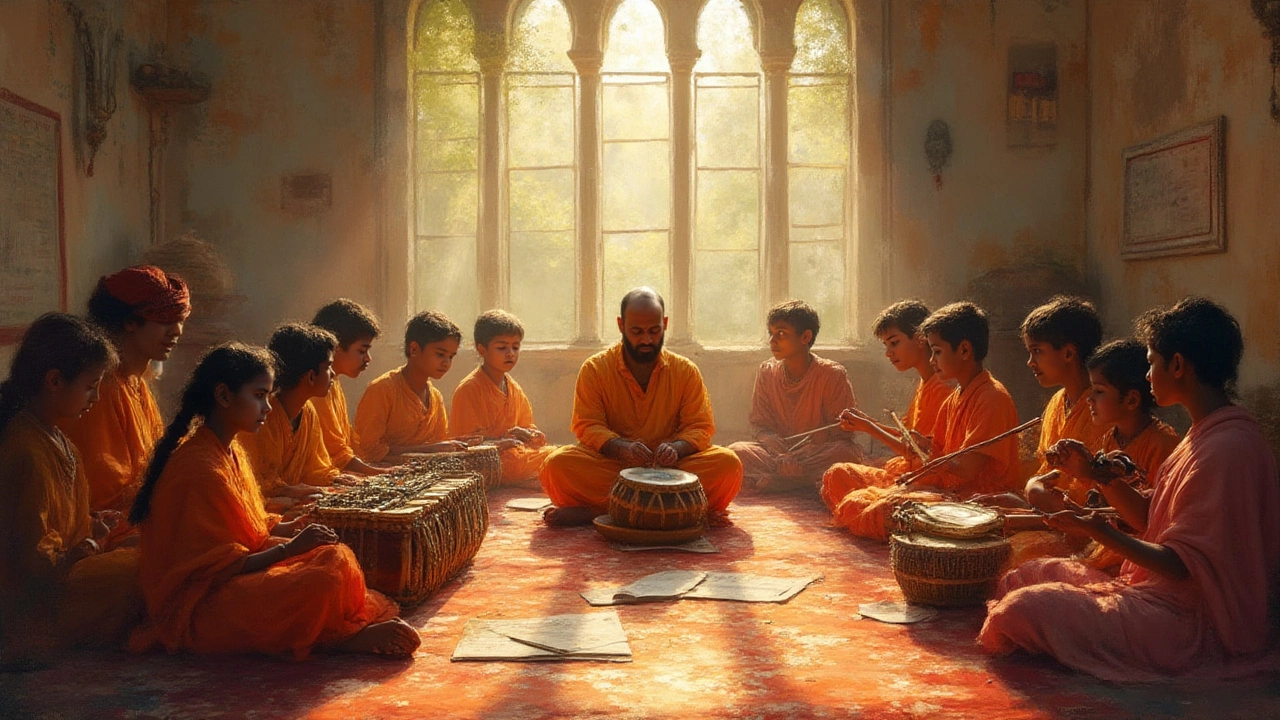Indian Classical Music: Hindustani, Carnatic, and What Makes Them Unique
When you hear Indian classical music, a 2,000-year-old system of melody and rhythm rooted in spiritual and philosophical traditions. Also known as Hindustani or Carnatic music, it doesn’t follow Western scales or fixed compositions—it lives in the spaces between notes, shaped by the musician’s breath and emotion. This isn’t background noise. It’s a living art where every performance is different, guided by Raga, a melodic framework that carries mood, time of day, and even season and Tala, a rhythmic cycle that drives the pulse like a heartbeat.
Indian classical music isn’t one thing—it’s two major branches. Hindustani music, flourished in northern India’s royal courts and Sufi shrines, blending with Persian and Islamic influences uses instruments like the sitar and tabla, and sings in Hindi, Urdu, and Braj Bhasa. Meanwhile, Carnatic music, grew in the temples of Tamil Nadu and Karnataka, staying deeply tied to devotion and Sanskrit texts, with the veena and mridangam as its backbone. One flows like a river; the other stands like a temple pillar. Both are complex, but in different ways. Hindustani lets you improvise freely within a raga, while Carnatic follows tighter structures with intricate patterns. You can’t say one is better—just different. And that’s what makes the tradition so rich.
Language matters too. Hindustani songs often carry poetic Urdu verses about love and loss. Carnatic pieces praise gods with ancient Sanskrit hymns. The way a singer bends a note, the pause before a beat, the way the drone hums beneath—it all carries meaning beyond sound. These aren’t just techniques. They’re cultural codes passed down for generations. Whether you’re listening to a 100-year-old recording or watching a young student in Chennai practice at dawn, you’re hearing history breathe.
What you’ll find below isn’t a textbook. It’s real talk from people who live this music. You’ll learn why some say Carnatic is harder to master, why Hindustani feels more emotional, and how Western listeners often miss the point entirely. There’s no fluff—just clear comparisons, personal stories, and the kind of insights you won’t find on YouTube. If you’ve ever wondered what makes Indian classical music so powerful, these articles will show you why it still moves millions today.
Hindustani classical music, a profound art form from northern India, uses several languages, each lending a unique charm and expression. Predominantly, songs are composed in languages such as Hindi, Urdu, Braj Bhasa, and Awadhi, reflecting the cultural diversity of the region. This musical tradition, deeply intertwined with historical and spiritual elements, serves as a conduit for storytelling and emotional expression. Through this article, we explore the significance of language in this genre, how it influences performances, and its role in preserving cultural heritage.




